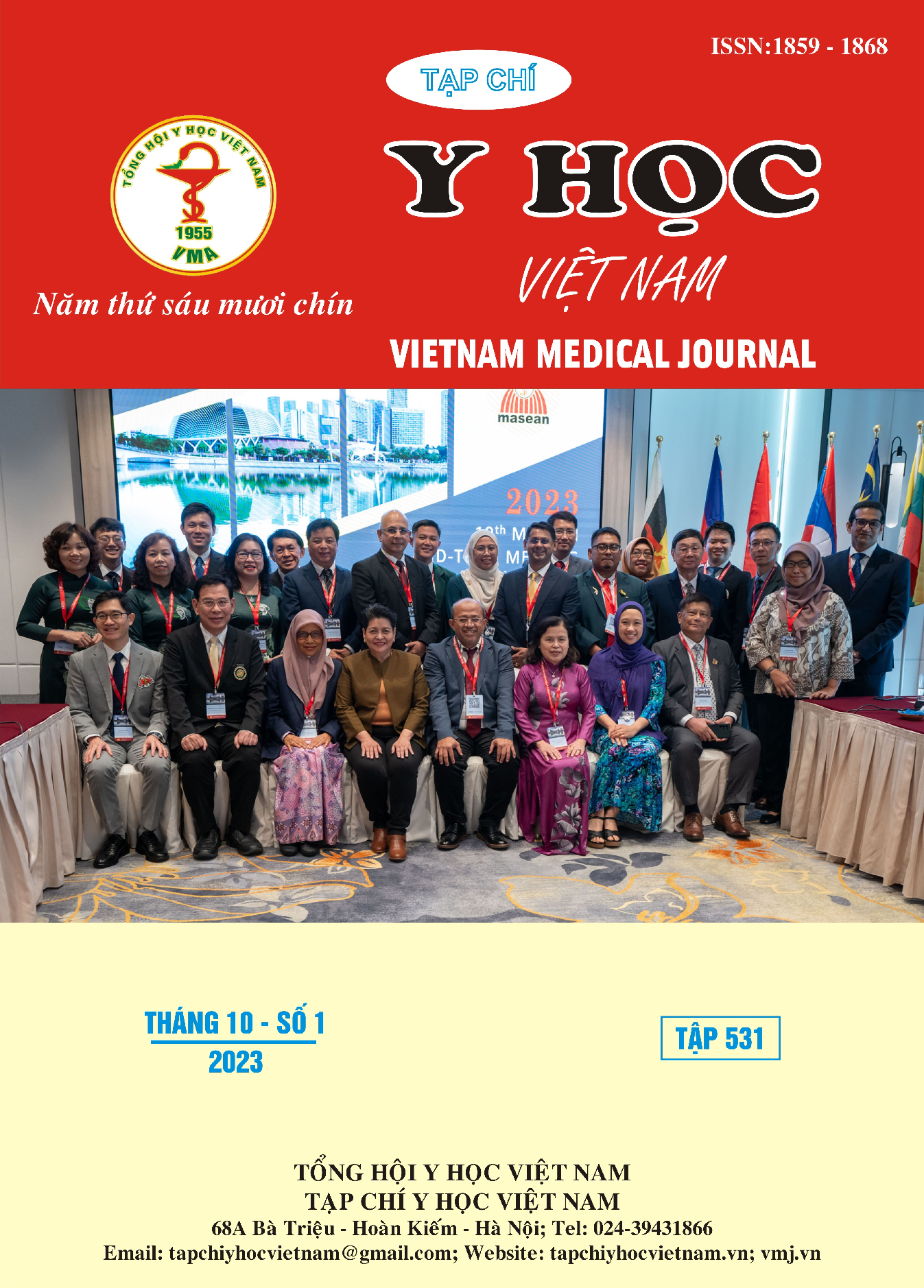MỘT SỐ KẾT QUẢ PHẪU THUẬT MỞ SỌ GIẢM ÁP ĐIỀU TRỊ CHẤN THƯƠNG SỌ NÃO NẶNG
Nội dung chính của bài viết
Tóm tắt
Nghiên cứu phẫu thuật mở sọ giảm áp (MSGA) điều trị chấn thương sọ não (CTSN) nặng trên 68 người bệnh, trên một trung tâm, dõi sau mổ 3 tháng. Kết quả trước mổ theo thang điểm Glasgow Coma Score (GCS) 4-5 điểm: 13.2%, điểm GCS 6 - 8 điểm: 86.8%. Điểm Rotterdam trước mổ: 60,3% là Rotterdam 5-6 điểm, 39,7% Rotterdam <5 điểm. Kết quả theo sau mổ theo thang điểm Glasgow outcome scale (GOS): 1-3 điểm chiếm 48,53%, kết quả tốt với GOS 4-5 điểm chiếm 51.47%. Các biến chứng bao gồm tụ dịch dưới màng cứng chiếm 25%, có 8,8% có biến chứng chảy máu gây máu tụ ngoài màng cứng, 1,4% máu tụ dưới màng cứng, 5,8% giãn não thất, 7,3% nhiễm khuẩn vết mổ.
Chi tiết bài viết
Từ khóa
Chấn thương sọ não, chấn thương sọ não nặng, mở nắp sọ giảm áp
Tài liệu tham khảo
2. Nguyễn Văn H. Nghiên cứu dịch tễ học lâm sàng và thái độ điều trị chấn thương sọ não kín do tai nạn giao thông đường bộ tại Bệnh viện Việt Đức năm 2016. Đại học y Hà Nội. Luận văn tốt nghiệp bác sĩ chuyên khoa cấp II; 2016.
3. Corrigan JD, Selassie AW, Orman JAL. The epidemiology of traumatic brain injury. J Head Trauma Rehabil. 2010;25(2):72-80. doi:10.1097/HTR.0b013e3181ccc8b4
4. Eberle BM, Schnüriger B, Inaba K, Gruen JP, Demetriades D, Belzberg H. Decompressive craniectomy: surgical control of traumatic intracranial hypertension may improve outcome. Injury. 2010;41(9):894-898. doi:10.1016/ j.injury.2010.02.023
5. Huang YH, Deng YH, Lee TC, Chen WF. Rotterdam computed tomography score as a prognosticator in head-injured patients undergoing decompressive craniectomy. Neurosurgery. 2012;71(1):80-85. doi:10.1227/NEU.0b013e3182517aa1
6. Nguyễn Đình H. Luận án Tiến sĩ Y học: Nghiên cứu đặc điểm lâm sàng, cắt lớp vi tính và kết quả phẫu thuật điều trị chấn thương sọ não nặng. Published 2018. Accessed May 10, 2023. https://123docz.net/document/6475596-luan-an-tien-si-y-hoc-nghien-cuu-dac-diem-lam-sang-cat-lop-vi-tinh-va-ket-qua-phau-thuat-dieu-tri-chan-thuong-so-nao-nang.htm
7. Ban SP, Son YJ, Yang HJ, Chung YS, Lee SH, Han DH. Analysis of complications following decompressive craniectomy for traumatic brain injury. J Korean Neurosurg Soc. 2010;48(3):244-250. doi:10.3340/jkns.2010.48.3.244
8. Maas AIR, Steyerberg EW, Marmarou A, et al. IMPACT recommendations for improving the design and analysis of clinical trials in moderate to severe traumatic brain injury. Neurother J Am Soc Exp Neurother. 2010;7(1):127-134. doi:10.1016/j.nurt.2009.10.020
9. Yang XF, Wen L, Shen F, et al. Surgical complications secondary to decompressive craniectomy in patients with a head injury: a series of 108 consecutive cases. Acta Neurochir (Wien). 2008;150(12):1241-1247; discussion 1248. doi:10.1007/s00701-008-0145-9
10. Rahme R, Weil AG, Sabbagh M, Moumdjian R, Bouthillier A, Bojanowski MW. Decompressive craniectomy is not an independent risk factor for communicating hydrocephalus in patients with increased intracranial pressure. Neurosurgery. 2010;67(3):675-678; discussion 678. doi:10.1227/01.NEU.0000383142.10103.0B


